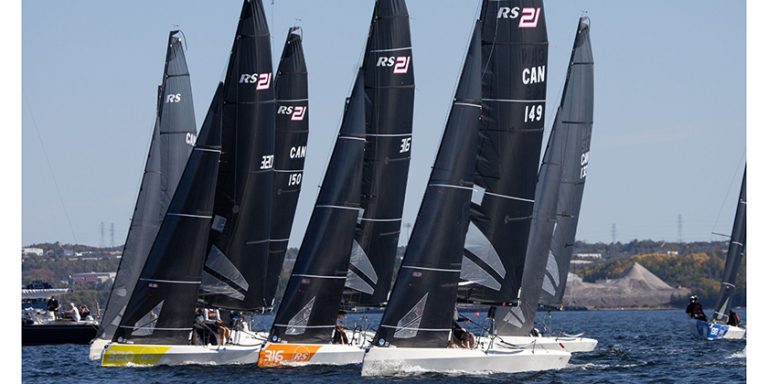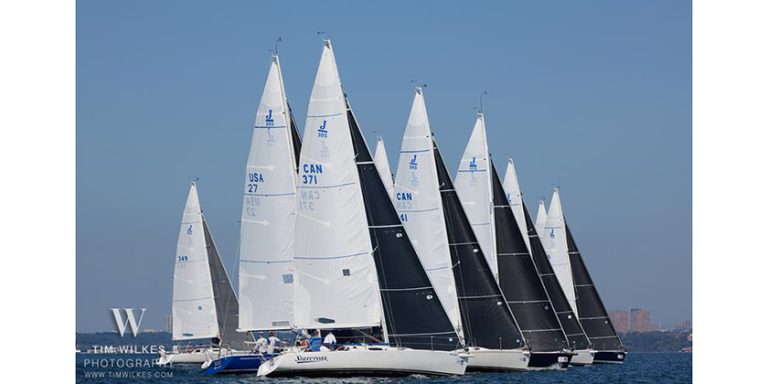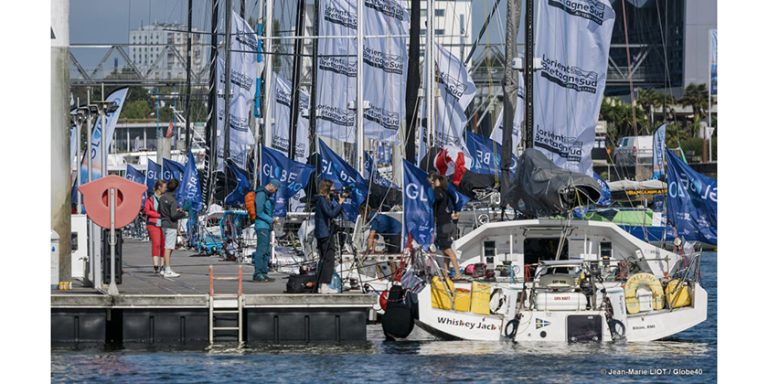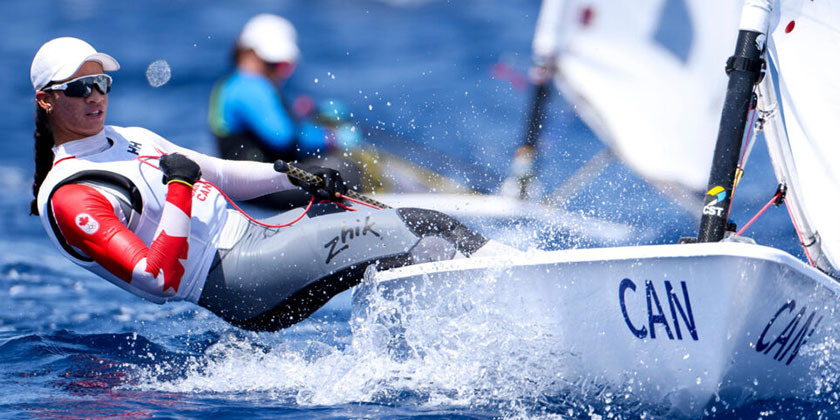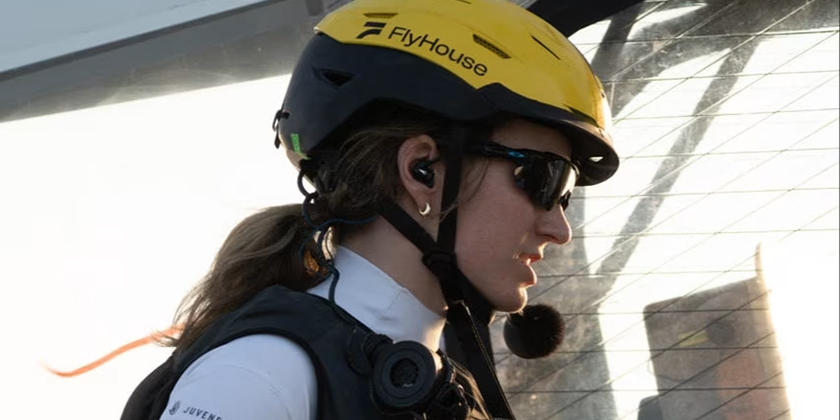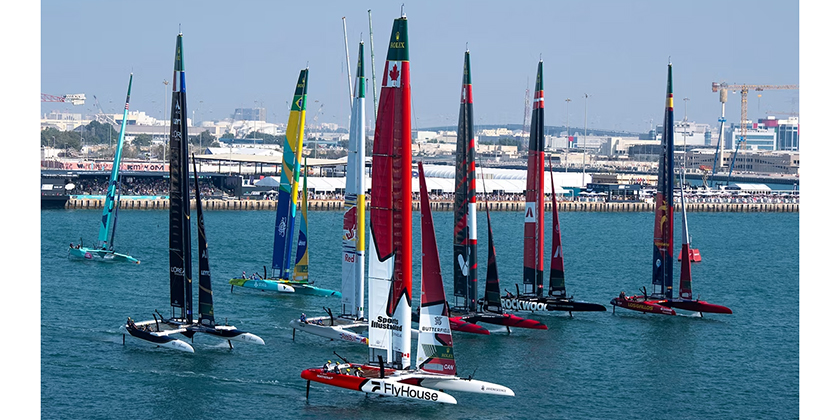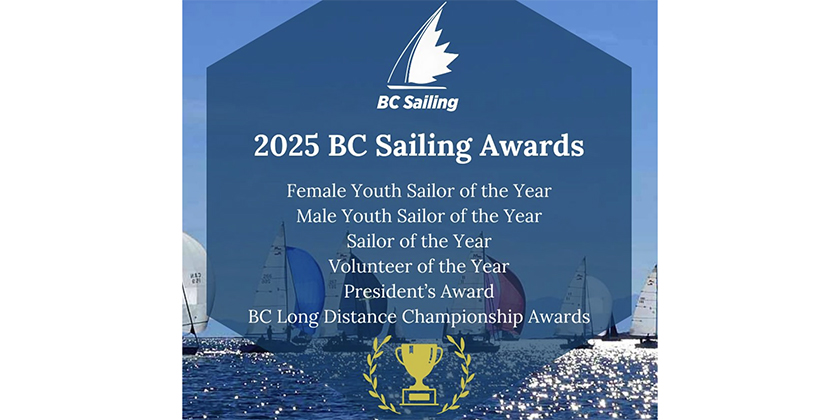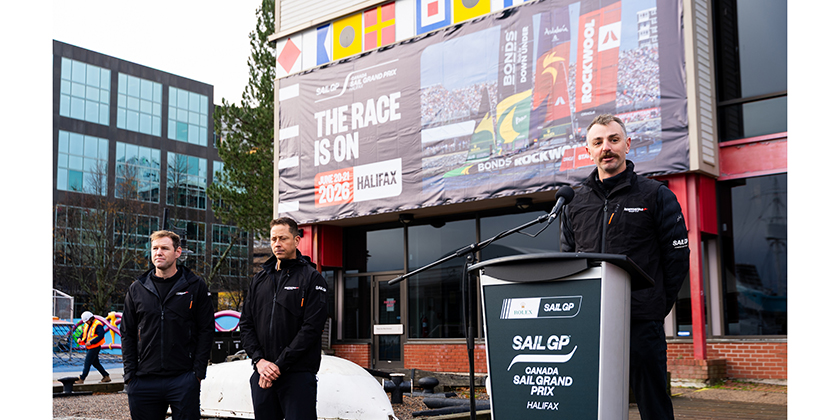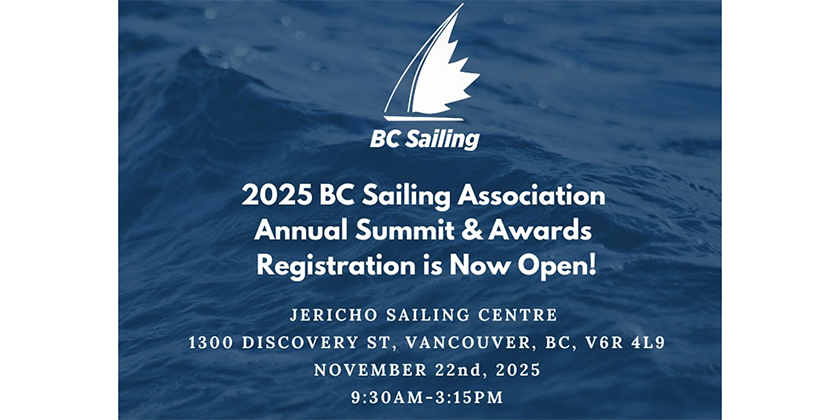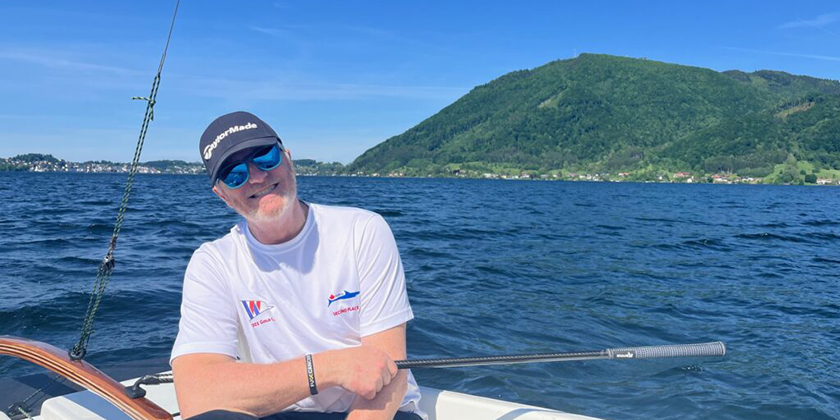PanAm Lightning: A Fight to the End
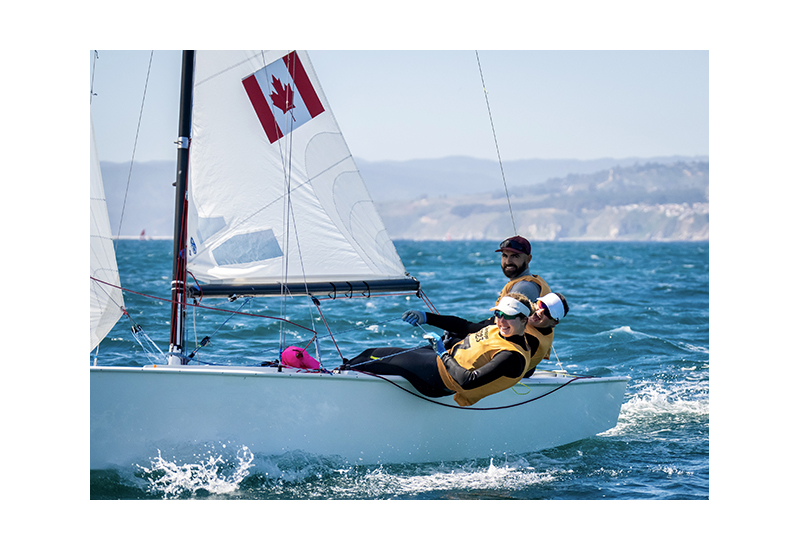
Nov 15, 2023
By Tom Ramshaw
Photo Credits: Dave Holland/Sail Canada
Before diving into a recounting of the actual event, it seems worthwhile to reflect on the journey to arrive at the starting line.
This year’s PanAm journey started in February with my trip to Pensacola, Florida, to secure Canada a berth in the Sunfish Class. Canada had a strong contingent in the Sunfish, and after winning a spot at that event, I eventually lost the trials to Lee Parkhill at the North Americans Championships a few months later. In fantastic fashion, it came down to the last race, we fought all the way around the course and finished tied on points. With one less 1st place finish in the regatta I lost the tiebreak calculation and Lee secured the spot. I was left only with my thoughts about what I could have done better to win, and my doubts about my ability to race at the top level.
It seems that everything happened for a reason, as Lee ended up winning the Pan Am Gold this week, again he battled with the other countries in a winner take all final and won, what a legend. In the end, in addition to being incredibly happy for him, I felt some satisfaction with the thought that working together beforehand and pushing each other in the trials, was a small piece of his winning journey.
After the Sunfish trials, as every athlete has experienced after a loss, I was at a low point. I was so lucky to have my family and a mountain of work waiting for me when I came home, keeping my mind off the feeling of regret that follows losing. It was in this period that I discovered that another Canadian team had qualified the Lightning class for the Pan American Games in Santiago, Chile, and the trials were just a few weeks away. It was a brash idea to even attempt to put a team together and show up to the trails, let alone win. But with little to lose, I decided at the very least it would help me get over my difficult loss at the Sunfish Trials.
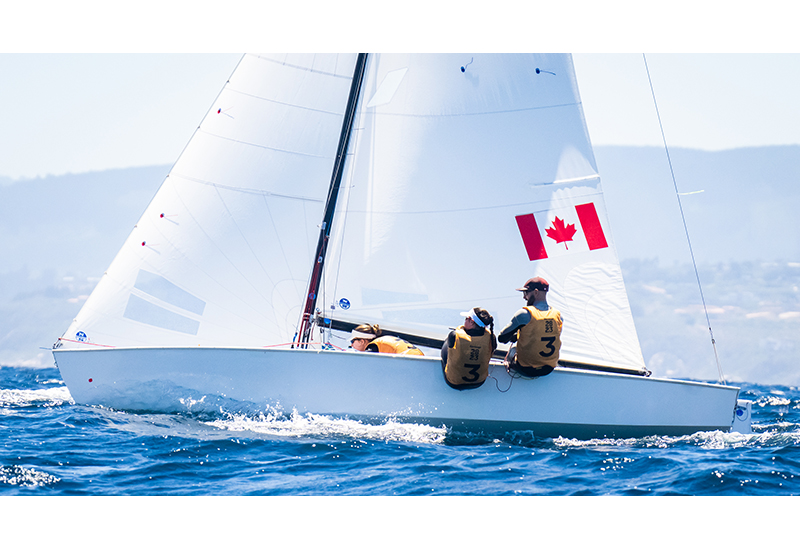
It was really just good luck that I was able to find two keen crew members, Jessica Hirschbold and Rachel Green to join me. We borrowed 1983 boat from Kitsilano Yacht Club, and sails from Larry McDonald and had a few quick days of training. To be honest, I never expected we would be able to figure out the boat tuning, feel and technique in time to be competitive – I thought we were going to get our butts kicked.
Somehow the pieces fell in place and we were able to win the Canadian Open and secure the Canadian spot. We had help from members in the class all across North America, offering advice from set up, to technique, to everything in between.
Even with the confidence of winning the trails, showing up to the PanAm’s is a different game. Every team has years, if not decades of experience and who were we to expect to be in the fight. Not actually owning a boat or sails, we chartered a boat from a kind, local Chilean sailor (this one was only 23 years old!) bought some used sails (and a new V17+ jib, the newest fast design) and made our way to Chile.
We did know a bit of what we were getting ourselves into. I travelled with a gear bag full of lines, blocks, and building materials, and we spent our mornings and evenings re-rigging, tweaking and refining everything we could on the boat, while squeezing in as much training as possible. Jessica and Rachel have an awesome attitude and committed to the daily grind. By the time racing was ready we had confidence in our boat, but no confidence in our speed. We spent an hour in 3-5 knots going upwind with the US team, but other than that we hadn’t lined up with any other boats, most of our time was spent on boat handling or just trying to figure it out by feel. My best guess was we would be slow, and it would be a long week.
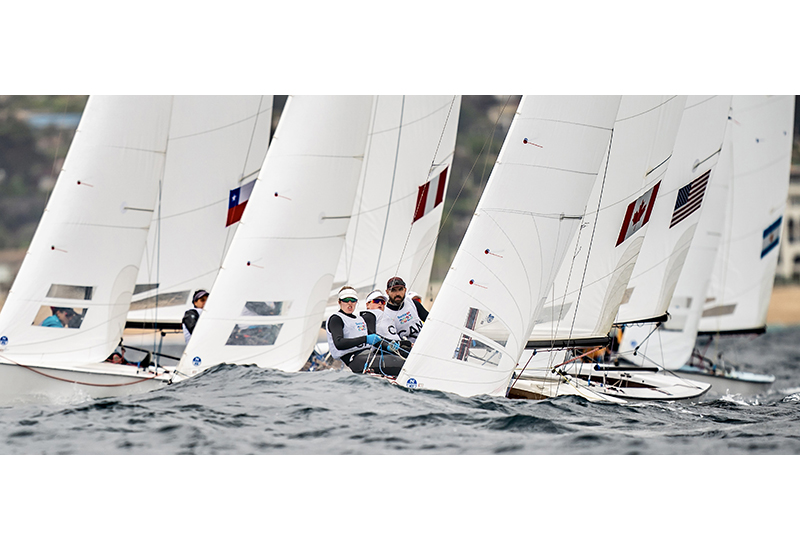
The regatta started with 4m swells and stormy north breeze, which left the race committee struggling to set a course on day 1. The waves in Chile were something I have only experienced in a few venues in the world, it is an amazing and humbling experience. The swell is predominantly skewed from the wind and the chop by 30 degrees to the right. It was so large that on starboard there could be a 4 knot wind speed difference between the top and the bottom of the wave, and your apparent wind would change so much that on one side of the wave your jib would be ¾ luffing, and the other it would be over trimmed. With such a large swell, the race committee was unable to set a course so the first day was called off.
The next day, we were playing catch up so we had three back to back races. The wind was 12-15 knots and it was the first time we had ever lined up with boats in a breeze above 10 knots, and to my surprise we were in the game for speed. Not fast in the first race, but close enough, and every race was an experiment, moving jib lead positions, spinning lowers, changing mast partner blocks, and playing with the “soft” controls. As a guide, I was just searching for a “feeling”, it’s the feeling you get when the gust hits the sails the boat wants to run forward. We were trying to listen to what the boat was telling us, and when the boat felt sticky we weren’t afraid to make a change to get us back on track.
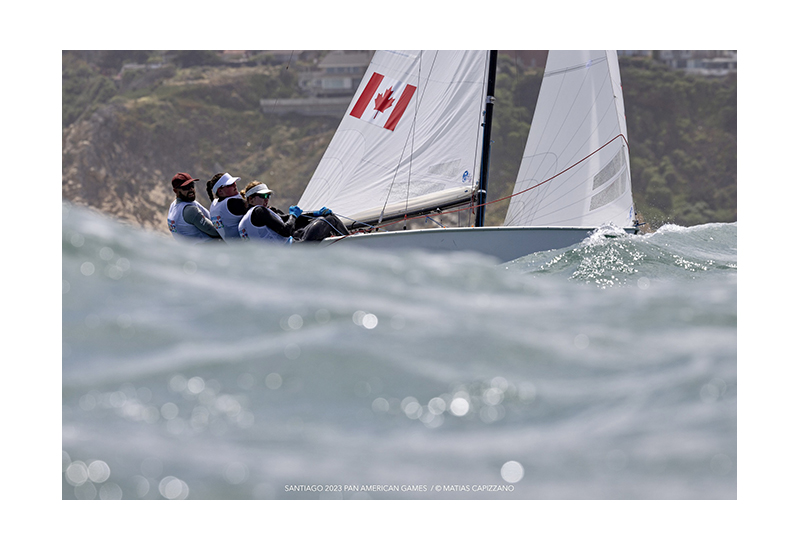
The first race of any Games is almost indescribable, every athlete is nervous, you can feel the tension, everyone has been thinking about this moment for months, or years, and the nerves can show themselves. In the pre-start we fought with the Argentinans for the pin and lost being forced to tack out early, but recovered with a 5-degree righty, and were back in the game, a well-timed gybe put us second at the bottom mark, but sailing too far to the right put us back in the weeds of the fleet. With some terrible downwind decision making on my part because of my complete misunderstanding of some of the nuance of the Lightnings fleet, I put us back to 6th. After the first race in the books, we could take a breath and see everything was to play for, we had a chance.
The next two races, no one was going to come between us and the pin, we fought like crazy, sometimes being too aggressive, anything to win the pin. We won it both times, and had the speed to sail clean, picking up a 2nd and a 3rd in the last two races of the day.
After day 1 we were pretty happy, sitting in 4th but just a few points off the lead, we had the ability to win races if we hiked hard and sailed clean. The first day of a big event is about staying out of trouble, and in touch with the leaders. Don’t take too much risk. One thing was clear from day 1, it would be a long week, and the Americans were just a touch faster in these conditions, and a little tidier around the corners. They came prepared.
Every day of racing was remarkably similar. 12-16 knots from the southwest, left favoured, and skewed waves so on the downwind you almost never needed to gybe off of starboard, laying the bottom gate from the top mark. This was not a racecourse that favoured being clever tactically, it was a boat speed and boat handing course. Day 2 had the same feeling as day 1: 3 races; get a lane out to left, hike as hard as you can, and fight for every inch of boat speed. If you come out clean from the left corner and have a good spinnaker set, you are gone. If you are fighting for lanes back from the left corner, or have a bad hoist, it is a real fight. After two days we were in 3rd, just a couple points shy of Chile in second, with USA slowly pulling ahead.
At the regatta midpoint, it’s worthwhile reflecting on what you need to change; if you are not winning and you stay the same, you are dead. We had to do something to get back in the fight. Really, the refined boat handling of the American team was a stark standout from us, if we rounded right behind, we were often eight lengths back by the time we had a flying kite, so on the day off we embarked on boat handling practice, we made huge strides and felt confident going into the second half of the regatta.
On day 4 we had the same conditions again, in the first race it was a battle all the way though with the Chilean team, just narrowly finishing 4th behind them, however, just as we were finishing, they stood up and yelled protest. They wouldn’t tell us what for. Then shortly after the race we discovered our lower vang fitting had ripped out of the mast, taking 80% of the mast section with it. Luckily, I had tied safety lines to the vang so we didn’t lose the vang in that race, but the mast was looking like it would break and fall over at any moment.
After chatting about it with the Canadian Coach, Fede, we decided the best thing was to sail the race. If we could finish, even if we came last, it would help us later in the week. I wrapped the break in an entire roll of duct tape, strapped the backstay and forestay, and we had a team chat about how to recover the sails, and rigging when the mast comes down. Our speed in this race was not quite on pace, but we managed to sniff out one of the only righties of the week and sail clean all the way through for the race win, it was a pretty remarkable feeling. We would be one point back from 2nd and could only keep fighting and hope the Americans stumbled in the last three races to give us any chance at winning.
We got back to shore at close to 6pm and unfortunately, we had to deal with finding a new mast, and a looming protest. I found out that the protest was for pumping downwind. I was distracted with the mast replacement; people were tired and I wasn’t able to find a witness. There is a class rule (amendment to the pumping rule) in the Lightnings which says you are not allowed to pump the windward sheet (guy) to initiate surfing on a wave. The intention is to prevent the type of pumping, simultaneously the guy and the sheet, which occurs in smaller boats like the 470. My thought was always they put this rule in because pumping the guy would require a huge amount of strength and power to do with these large kites in a strong breeze and would favour teams who put a big strong middle person. One thing I learned about Lightnings this week was with more breeze it seemed that sailing by the lee was actually a viable mode, sometimes it put you in a strong position tactically, or it allowed you to position for better wind with a minimal VMG loss. When we were going by the lee we would adjust the guy back, and when then transitioning to a hotter (non-by the lee) angle we would adjust the pole forward.
In the protest, I was honest about how we would adjust the guy, when we were making a course change. The Chilean’s argument was that the only reason for adjusting the guy was to pump, and this was a rule violation, they stated that they saw us outright pumping the guy and brought in a witness who said they saw us adjusting the guy. I was certain that because we never pumped the spinnaker, and there was an umpire on the course to observe the sailing, the truth would come out as obvious and the protest would be dismissed. The accusations of pumping were a lie, but it worked, and we were disqualified from race 7.
After the protest, my thought was that perhaps I misunderstood the rule, and that’s why the Jury disqualified us. To be certain that my interpretation of the class rule was correct I put in an inquiry to the jury and they confirmed with a course change you could in fact adjust the guy. It was clear we interpreted the rule correctly, but the jury believed them when they said we were pumping. In retrospect I could have done more to defend our team, having video evidence, or getting another competitor to witness. It was a tough lesson to learn, in my entire sailing career I have never had a scenario like this happen, and it just goes to prove that you can never be too prepared.
By the end of the hearing, it was 8:30pm, I had only a couple protein bars since breakfast, the sun was down, and we still had to find a mast for the next day.
The US Lightning team, Allan, Sarah, and Madeline, in an incredible act of sportsmanship lent us a mast to use for the final 2 days of racing. I arrived at 7:30 am and rigged the new mast, having to get creative with some systems which were different for their mast set up. The breeze that day was blowing at around 20 knots and I quickly tuned up the rig, re-measured it in with the jury and we went out for the day of racing.
Just before the first race the wind dropped to around 12 knots and I changed our settings to a best guess, we got the setup just a bit off, and struggled for speed that day. With a one way racetrack and so many good sailors racing, if you are just off on your boatspeed things are pretty dire. We managed to scrape by with a 4th and a 6th and to go into the medal race with a shot at Bronze, we would have to keep a boat between us and the Argentineans.
At this point in the regatta, it’s easy to get distracted. People are wrapping up their events, some are celebrating, and others dismayed. I was incredibly privileged to be part of such an amazing Canadian Team. In past games it has often felt like there are five or six individual teams all of whom are wearing the Canadian gear and friendly with each other. But at this event it felt like there was one single Canadian team, we shared in each other’s triumphs, and pulled each other up in times of adversity.
Every night we would gather together and tell stories, talk strategy, and motivate each other to get better the next day. There was a “buzz” to the team that was a little bit different, and it showed in the results. Almost every class lived up to or exceeded their goals, and no matter the result, there was a fire to win. Those last days you can feel the energy, Justin and Will in 49ers, and Ali and Mariah in FX sailed beautifully to secure Bronze and Silver Medals.
On our final day of racing just before going out Lee won the Gold in Sunfish and Sarah the Silver in Radial. Despite the distractions we had to keep our focus in the last race. In medal races you aren’t given much time to prepare, they release you and you have to race out to the course to have any time to get used to the settings and the conditions. The race is a short, 20 minute sprint.
We had a good gameplan and executed it at the start. Forcing the boats above us to tack and coming back in good pressure to try to control the fleet. We had to put 1 boat between us and Argentina, and as we were racing out the right I could feel the boat, it was feeling “sticky”. We needed about one more boat length of speed on the beat. The US had a lead and at the top we just couldn’t cross the Chilean team, had to duck them and rounded 3rd. In reflection it is clear that the difference in our speed between the start and the end of the week came down to not being able to dial in the new mast after the original one broke. We fought back hard on the downwind and second beat but we were just behind 2nd at the last bottom mark with the reach to the finish. In a bit of desperation, we tied to hold a kite on the reach to the finish to get a pass. Halfway down the final reach the tweaker cleat blew, there was too much load and the old cleats couldn’t hold, we reset it and it happened again, we limped across the finish line. We ended the race, and regatta in 4th.
While we are fortunate that sailing is a lifelong sport, you don’t get many opportunities in your career to have a chance to win an event like the Pan Am games. After the bitter sting of coming 2nd in the last two Games in the Sunfish Class, I showed up in Santiago to have another chance at a good fight, and maybe, if the stars aligned, a chance at winning that elusive gold.
With our lack of time in the boat and old equipment, we didn’t deserve to win, but the scoreboard doesn’t care about who deserves what, this week we made the others earn their spot ahead of us. Hats off to our competitors. Jessica and Rachel showed awesome fight and we didn’t give an inch on the racecourse. We weren’t successful this week but we were proud to be part of a great Canadian Team and to have had the opportunity to have taken our shot. Life isn’t all about winning, but it sure feels like it is, especially after losing. If having kids teaches you one thing it’s that the richness in life comes from contrast, the highs, and the lows, all of which we experienced this week.
P.S. For a look into the day to day of the event here is a link to a Daily Video Blog from our kite trimmer Rachel Green.

